Seeing once a magnificent, amazing flowering of hydrangea, among the lovers of nature appears a persistent desire to grow this plant and at home or in the parisader near the entrance. Well, can there be no attention to the beautiful hydrangea busts of hydrangea, which is literally "buried" during flowering in chic, gentle inflorescences, similar to the clouds?!
A variety of hydrangea
This name is the representative of Flora in honor of the princess, which is the name of Hortensia. She was the sister of Prince Roman Empire. But the nerds are often called a plant of hydrans. And from the Greek word can be translated as a "vessel with water." And this is the name of the plant quite aptly, because it loves moisture very much. Most hydrangeas grow in the form of bushes, whose height is from 90 cm to three meters. But there are views growing as small trees or lianas. Most often leaf falling shrubs are cultivated, but in nature there are evergreen representatives of the Gynthenziev family. And the big plus hortensia is that they bloom for a long time - from May to late autumn. Inflorescences - spherical, blurred or similar to "shields" or "umbrellas" are formed at the ends of the stems. Some species in the inflorescence are closer to the middle there are small flowers, of which the fruit are formed, and larger, spectacular, located closer to the edge, they are sterile. There are also species in the head of which flowers are the same size, and they are all able to give fruit. Here are the most common types of hydrangeas:
- tree;
- himalayan;
- large;
- dolisant;
- sweatshirt;
- cherry (curly liana).
Typically painting flowers white. But the hydrangea of \u200b\u200blarge-flowered (it is also called garden) the color of flowers can be pink, red, blue, blue, lilac. Often, the color depends on the hydrogen indicator (the level of the soil reaction) and the presence of aluminum in the soil. Petals are white or pale beige, when the soil is neutral. If in the soil the reaction of the environment is acidic, then flowers are bluish, blue. Inflorescences are lilac or pinkish if alkaline soils. Here is the nuances of growing large hydrangea and will go further in our article.
Description of hydrangea hydrangea
In natural conditions (in subtropics), this shrub can reach three or four meters in height. Cultivated hydrangeas are usually height from one to two meters. Indoor forms usually grow up to 60 centimeters. Ophid leaves or oval with a pointed top. Their color is dark green. From June to October, the plant decorates inflorescences - white, bluish, pink greenish, lilac, cream or pests. In Europe, the first copies of thermal-loving hydrangea, capable of giving ohaphkins of colors, were brought from Japan. In Russia, first contained them only at home. Gradually, this beauty learned to grown in the conditions of open soil, but with shelter for winter time. If last year's shoots are successful, then flowers will appear on them. Now thanks to the breeding work, it was possible to acquire relatively winter-hardy and repairing varieties of this beautiful plant.
Varieties of large hydrangea
Experienced gardeners have long been learned to successfully grow such interesting hydrangea varieties:
- "Avantgarde" - this bush has very large, dense inflorescences, the diameter of which reaches 30 centimeters. These "caps" are surprised and a variety of shades of petals: white, pinkish, green, lilac, bluish.
- Blushing Bride Endless Summer - White boutons appear on the bush, then they turn into snow-white semi-world flowers. Gradually petals pose. Therefore, in the people, the variety was given another name - "blushing bride."
- "Blamumayza" - since July on this compact bush (its height of about 120 centimeters) lace inflorescences are banging, the average diameter of which is 15 centimeters. Edge flowers are larger than those that are in the middle of the inflorescence. Petals can be blue, and when the acidity of soil changes, under the bush gradually stain in the red lilac, and then in pink color. Experience shows that the variety of this hydrangea is resistant to diseases, but necessarily needs good shelter before the arrival of winter. It blooms directly on last year's shoots, so it is important to keep the floral kidney laid on them.
After 2003, in the gardens of Russians, fans of hydrangeas, thanks to the efforts of breeders, new hydrangeas began to appear. We will list only a few varieties of more winter-hard-resistant large-scale hydrangeas:
- endless Summer series (translated as "infinite summer");
- "Early Sensation" (one can translate as "Early Sensation") - this series has several representatives;
- "Red Sensation" (translated as "Red Sensation");
- forever series;
- machrov series "Yu-End-Mi" ("Symphony", "Romance", "Tuguez", "Expensn");
- "Expression" (saturated pink terry flowers);
- "Hovaria Hanabi Rose" (terry flowers, their color is light pink, but when the hydrogen soil changes can be transformed to a bluish);
- "You & Me Love" (Beautiful Pink Petals can also change coloring);
- "Peppermint" (pink flowers with white wheelchair).
Now in nurseries and many flower growers in the plots you can see the repairful varieties, for example - "Bloom Star", "Mini Penny", "Hoberman", "White Ball", "Coco Blank", "Firevox White", "David Ramsey", "Ripl".
Such bushes first (in May or in the first weeks of June) appear boutons on those shoots that they overwhelmed. And a little later, the buds are revealed on the grudges of this year.
Blue hydrangea hydrangea is obtained in a weakness of the soil of the soil from varieties - "Nikko Blue", "Mini Penny", "Jomari", "Hopcorn-Blue", "Freepon".
You want multi-colored hydrangea, then look for a variety "Frido", "Compheit", "Ramars", "Exproshn", "Madzhik Sanfields", "Shloss Wackerbarth", "Sweet Fantasy".
White flowers that do not have pigments are formed in varieties - "Shna Bol", "Koria".
Take a landing of large hydrangea
The best time for planting this plant is spring (when the rays of a warm sun will warm the soil), but it is allowed to do this in the first two weeks of September. Wonderful if the site that you will assign for hydrangea will be with a light fellowship, which is something protected from wind-leisure streams. Very good if the sun's rays will fall on the bus for six hours a day (better in the morning and evening hours). Under high hydrangea trees, it is better not to post, otherwise such large neighbors will take themselves all the water from the soil, manifesting the moisture-loving modest neighbor. The depth, width and length of landing pit should be about 50 centimeters. The mixture that you will fill in the pit, prepare in advance, for example, from such components:
- light garden land (two parts);
- riding peat (two parts);
- humus (one part);
- favoring needles (one part).
If you have a clay soil, then be sure to put drainage to the bottom of the dug hole, for example, small pebbles, clay.
Hydrangees are well evolving on those soils, where the reaction is sour. If you expect blue, blue and lilac paint flowers, then aluminum sulfate should be sent to the pit. If the varieties are planted, the painting of flowers in which pink or red is declared (for example, Alpenglyuhen varieties, Red Baron, Early Sensation, "Red Sensation"), then such forms need an alkaline environment.
First, the roots of the seedling must hold for a while in the bucket with water, and then begin to land. Install your seedling in the prepared pit, straighten its roots and then sprinkle them with that mixture, which was previously prepared. The root neck of the plant can only be broken in a bit, because it is located the lower kidneys that can give a young piglet. The rammed under the plant is generously painted so that he can be good to soak. So that the moisture remained longer, suck the ground near the coastle of the mulch layer, using the jammed bark or peat or peat. This is such a mulch further contributes to the reaction of the medium to be acidic. If you have several seedlings, then between them should be a distance of at least meter.
Recommendations for the care of large-scale hydrangea
Once again we recall that for good development and flowering, hortensias need a lot of moisture. Therefore, it will be necessary to ensure that the soil around them is wet, watering in a timely manner. For a prosperous wintering, it is important that in the fall of hydrangea hydrangea received a lot of moisture. It is best to take rainwater from a barrel standing in the sun. If you do not have such water, you're in advance, in the barrel of water pipes so that it warms it in the day. Before watering into rigid water, add some citric acid (or diluted 9% vinegar).
Be prepared for the fact that the young bush will not immediately give you a shock of flowers. At first it will develop the root system, and only then with each other year the colors will be more and more. To avoid rotting the roots, in the first season in a bucket for irrigation, pour several potassium permanganate crystals so that the solution becomes pink. The first three seasons of the chicketer of hydrangea are not cut. You can only delete the dried twigs. Then every spring will need to be trimmed. Cutting is made to the first living kidney, cutting up old inflorescences left on the bush for the winter. If you enter the sprig of the repairing grade in the spring, then a little later (in the same season) in the same twig of the lateral kidneys are formed several blooms. Thus, increase the amount of inflorescences in varieties of removable type of hydrangea. If you doit this method of a sprig of ordinary hydrangea, then new inflorescences on these branches will only see next season.
In the spring, large-scale hydrangea needs feeding. It is better to use special mineral complexes designed for hydrangea for it. Spend the second feeding at the time when buds appear on the plant. The third feeding is made in the fall (in September), shortly before the end of flowering. Still under the plants can be added by humus. One of the feeding can be carried out by adding divorced dung to water to water.
And now a little about diseases that sometimes develop on hydrangeas:
- Chlorosis - it can be suspected if the leaves suddenly began to yellow the leaves on the bush, and their streaks remain green. The disease develops if the soil is alkaline medium. To eliminate the symptoms, it is necessary to sculpt the soil by making feeding with iron vitrios, a solution with the addition of potassium nitric acid.
- False powdery dew - Oil specks appeared on the sheet plates appear on the leafy plates, with time yellowing. Gradually, these stains grow in size and darken. In this case, spray your bushes with fungicidal preparations.
If some leaflets on hydrangeas began to fall asleep and fall, then inspect the leaves carefully from the bottom side. If there is a web, then these are signs of the appearance on a bush of sputum ties. Aktellik or other insecticidal preparations will help to cope with them.
How to propagate a large hydrangea?
There are three ways to easily propagate the Holtenzia like:
- Delivery bush in spring. Prepare a few holes for the placement of "Novoselov". Dock your born bush. Divide it into several parts in such a way that the kidney growth has been present, which will then give a young piggy. You can slit long roots and shorten shoots.
- Reflexion of messengers in early May. Several flexible twigs bent from an adult bush, secure them in the well using a bracket. The depth of the wells should be approximately 15 centimeters. Where the twig will come into contact with the soil, leave the leaves. In this place, lay a bour with a knife to "run" the process of formation of roots. And only then fall asleep the hole of the earth. The top of such a twig can be tied to a small peg so that it stands vertically. Visit your chains and constantly moisturize the soil around them. By autumn, the twigs are rooted. You can cut them off from the bush. Locking these young independent plants. Spend next spring.
- Shining - it is held in June. Cut in the morning with one-year shoots segments, whose length is 10 centimeters. Nizhny cutout. The bottom leaves will disrupt, and the upper cut to the middle. Put them at home in a cup with "Kornvin", it will stimulate the formation of roots. After a day, send the bottom of each cutter to a wet substrate. If possible, shifting spend in mini guy or cerebrals. If there is no, then you can use a privided bed. Then the cuttings cover the cap, cutting the plastic bottle in half. Periodically, remove the cap, moisturize the substrate, and spray cuttings slightly. Somewhere in a month you will see how young leaflets begin to grow. So, the roots in the ground have already thrown away.
Is it possible to change the color of the hydrangea hydrangea flowers?
There are varieties of hydrangea capable of changing their painting with red or bright pink on a lilac, blue, blue. The color will change if the soil is under the bush with an acidic reaction of the medium. To achieve this result throughout the season, once a week, aluminum sulfate is required to be added to water for irrigation (two spoons of this chemical compound are measured for two liters of water). It is necessary to feed such hydrangea such fertilizers, where it is little contained phosphorus, otherwise the excess of this element will bind the aluminum present in the ground, which will interfere with the change in color color.
Another way to change the color of the petals, this watering plants twice a month with water, in which the salts of iron or alumocaly (ammonious-potassium) alum (in two liters of water should be placed 5 grams of alum). Now in garden shops there are special blue dyes and a means for acidifying the soil, called "Aside Plus".
If you want hydrangea to continue to give bright pink or red inflorescences, then maintain an alkaline reaction of the medium, slumming under the bustice of the ash or watering it with water in which the dolomite flour is stirred. And fertilizers these bushes, respectively, need such where the phosphorus content is high.
How does the hortensier hydrangea winter?
If in your winter the winter is warm, there will be no hassle with hydrangea. But in the regions where winter winters will need to hold a number of events.
The heat-loving bushes of this type of hydrangea must be reliably prepare for winter so that frosts are more than 18 degrees do not damage them shoots. First, before the arrival of stable frosts, the bushes spray with burglar liquid to prevent them from spining. Next, choose one of the ways of winter shelter:
- Pour a good slide from peat to the bush. Put the bootter on this elevation. If shoots are low, you burn them to the surface of the soil. Lock them with a wire frame. Open over the non-woven material (for example, Loutrasil), cover the snack or compost ground. Next, put Ruberoid so that it protects against precipitation.
- If the branches of your bush are already high, rigid, they are not allowed to hunt to the soil, then tie them together with reservoirs, shifting large fir branches. Next, cover them with several layers of agrofiber (agrosport). Top pack everything under a dense film.
- Original idea for plane dry shelter. In October, spread your hortenside hortenside bush as a "sun". To do this, tilt all the shoots and place the diameter (as the sun's rays are drawn in the picture). When the ports of the bush were laid, pour the peat bucket into the center. If it is not available, then pour a bucket of garden land. So you protect the roots of your hydrangi from the cold. Next, cover the rolling hinges Loutrasil. Top sketch dry foliage, and the last layer will be a dense film. Her edges secure bricks or boards. In the spring, when the sun will start actively soldering the sun, after you remove all the layers of shelter, then gradually shoot themselves will rise.
In the spring of shelter beds with hydrangeas remove gradually, because sometimes there are significant night setback.
Useful tips from Tim Bebel
Tim Bebel - it's Hydrangea specialist working in an American garden centers selling seedlings of this plant and grow them in your own garden. Many admirers of hydrangeas often complained to him that diligently care for their gidrangiyami, but they are increasing the green mass and color are not allowed. What can be done to consistently and hydrangeas bloomed magnificently? In his book, Tim Bebel gives the following advice to those gardeners who grow large-hydrangea in cold climates:
- In early July, cut on the bush gidrangii one-third of non-flowering branches, their height from the ground became a five to twenty centimeters while leaving to escape a lowest gemmule.
- In the autumn frosts before the arrival of its highest branches bush shorten so that then there was a possibility of their zamulchirovat. Mulching leaves wither swipe and those branches that were cut.
- Around mid-October, well Zamulchiruyte hydrangea bush, using peat, shredded bark. You can then apply to "gorochku" large branches of spruce.
- In late April or early May (guided by the weather) after all the spring frost, gently otgrebite mulch. Be careful not to damage the fragile buds on the branches. In the first week of June, you can trim the parts of branches that look shriveled.
- From May to mid-August once a week for watering, add in the water, which are going to moisten the soil under the hydrangea, fertilizer, where there is a lot of trace elements and nitrogen, such as "miracidia."
A method of growing large-leaved hydrangea in containers
If you have purchased in the nursery or flower shop wonderful variety of hydrangeas, but afraid of if he perezimuet on your country, you can try to grow it in a container or a large pot. First, place the bottom of the container pebbles, creating a drainage layer. Then fill it with a substrate and move to the purchased seedling. The substrate must necessarily be loose. To do this, mix equal parts taken in:
- garden soil;
- needles from pine trees, forests and brought from polupereprevshie;
- peat moss.
From May and until the end of September, these containers exhibit into the garden, placing them around the house, gazebos, on the veranda, in the recreation area. In September, the blooming inflorescences do trust. After the foliage on the bush courses, it will begin to leave the bushes, all shoots gently tie and transfer to a basement or another room where the temperature will be about plus five degrees. In March, these hydrangea can be transferred from the cellage to a leaper room, pour warm water, make fertilizer. Then the coniferous opead can be added to the containers, which will contribute to the acidification of the soil and the longer preservation of soil moisture. Every five years such bushes are desirable to translate into a new substrate. You can put them in the garden at the beginning of May. But if the weather forecasters will warn about the arrival of frosts, it will have to paint the spunbond on hydrangea.
For diligent care and attention of the bushes of hydrangea hydrangea will be delighting you every year with your delicious blossoms.

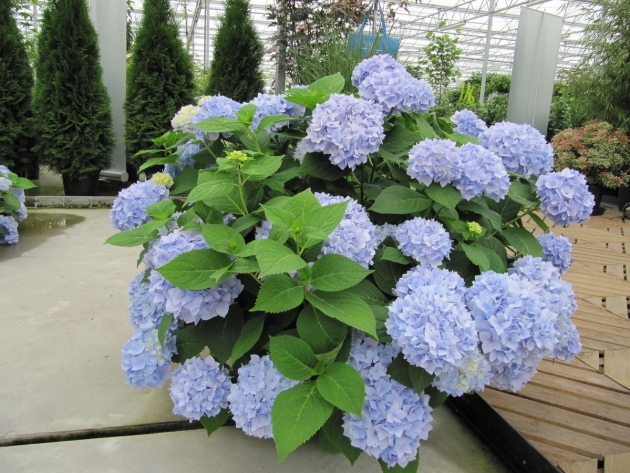
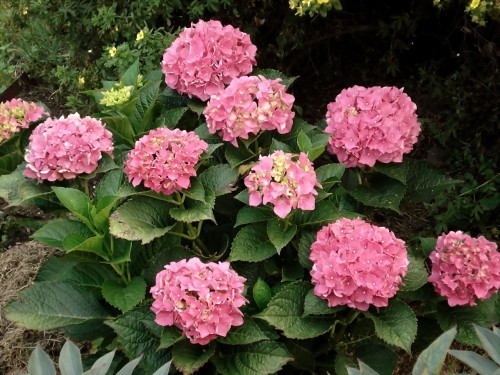
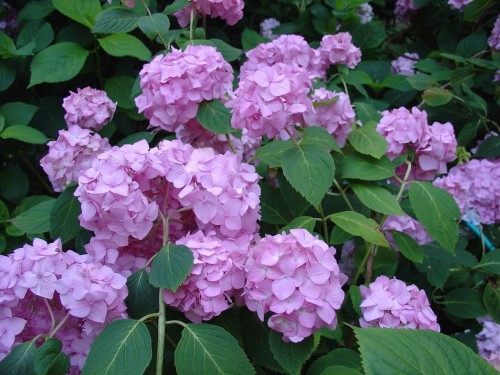
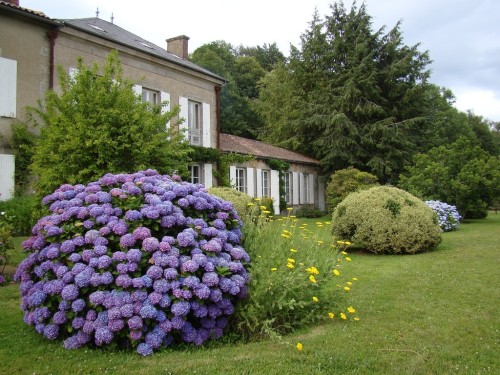
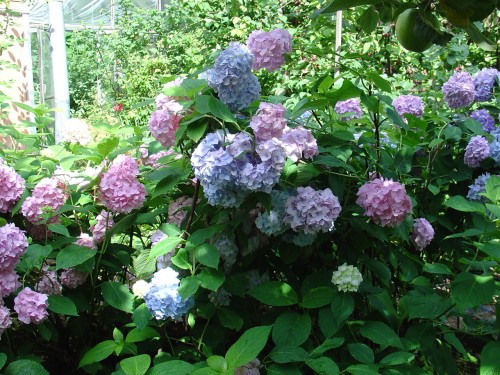
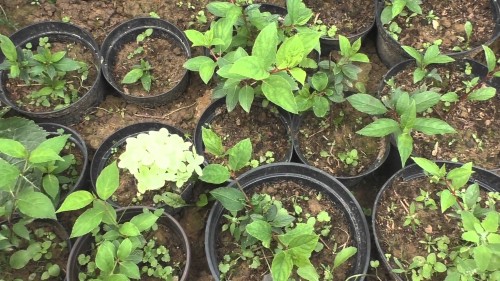
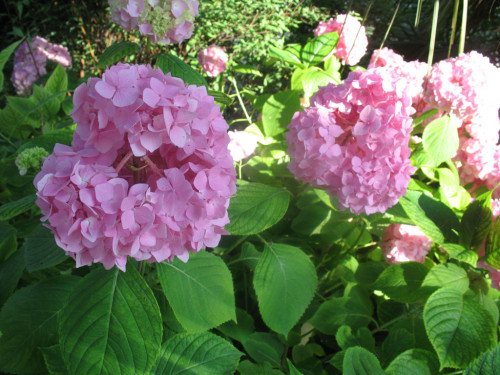
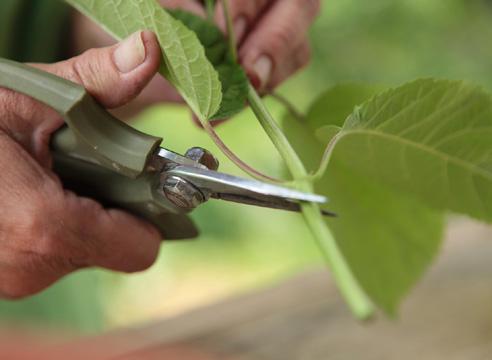
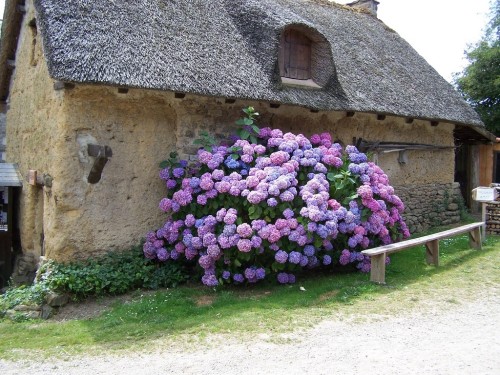
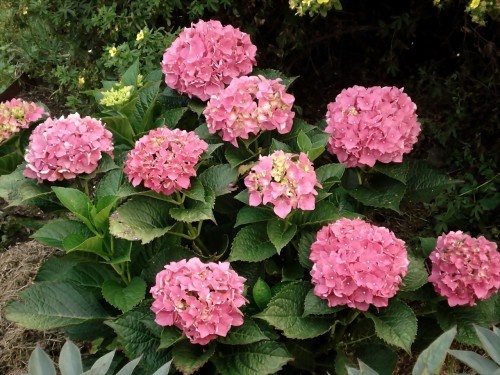
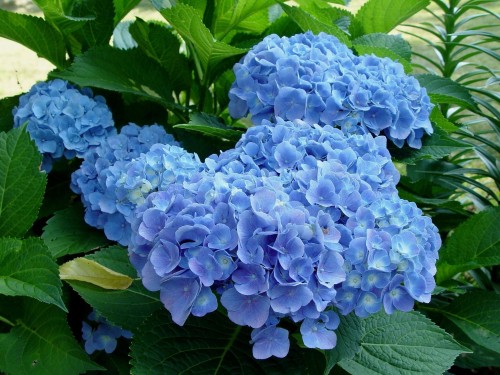
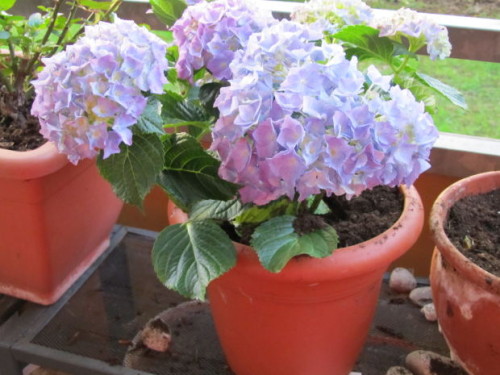
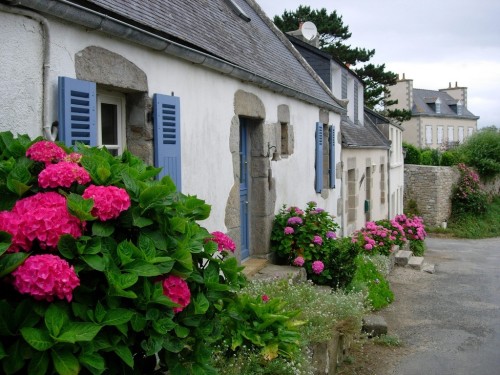
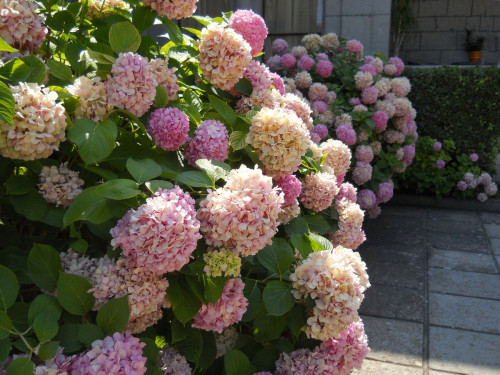

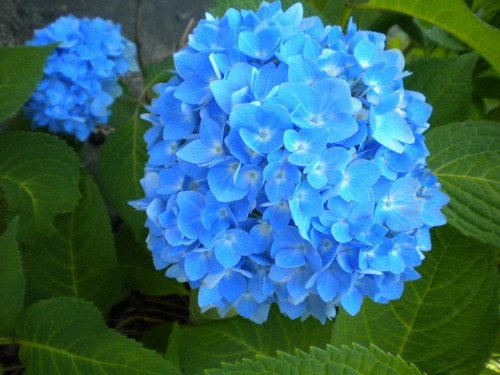
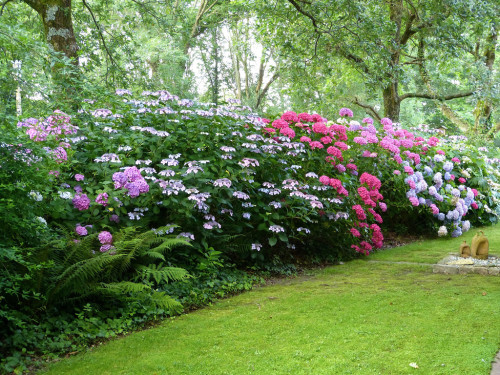
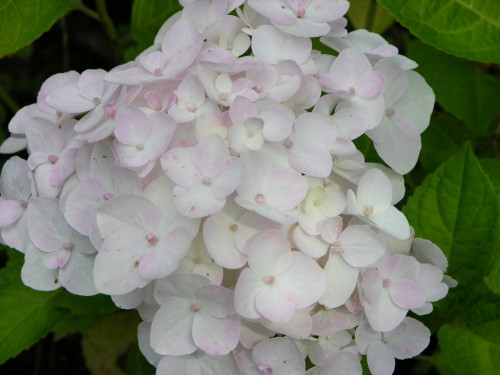
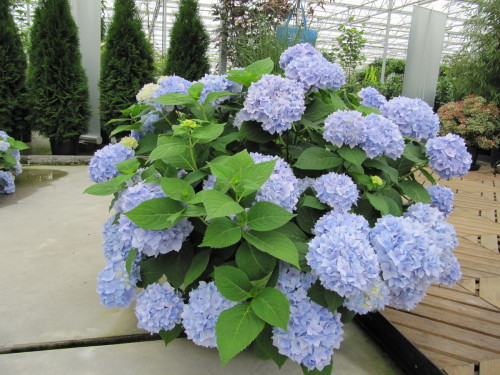












 Start a discussion ...
Start a discussion ...